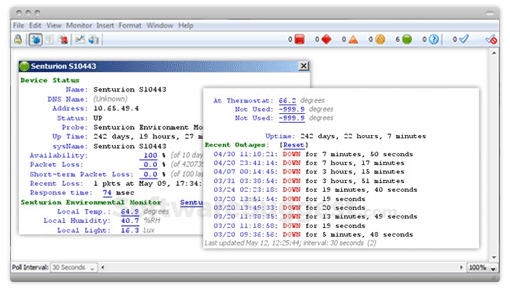

# Retrieve all interfaces from Intermapper, Net::Intermapper::Interface instances My $interfaces_ref = $intermapper->interfaces My %interfaces = $intermapper->interfaces # Retrieve all maps from Intermapper, Net::Intermapper::Map instances # Retrieve all devices from Intermapper, Net::Intermapper::Device instances # Returns hash or hashref, depending on context # Retrieve all users from Intermapper, Net::Intermapper::User instances # cache - Boolean to enable smart caching or force network queries # modifyport - TCP port for modifying information. # port - TCP port for querying information. # ssl - SSL enabled (1 - default) or disabled (0) # username - Username of Administrator user

# hostname - IP or hostname of Intermapper 5.x and 6.x server My $intermapper = Net::Intermapper->new(hostname=>"10.0.0.1", username=>"admin", password=>"nmsadmin") For more information, see the user guide available from Intermapper's Help menu.Net::Intermapper::Device - Interface with the HelpSystems Intermapper HTTP API - Devices SYNOPSIS use Net::Intermapper This is covered in more detail in the mapping large networks tutorial.

Then use the Scan Network command to do an auto-discovery on that subnet. If you have a large network, use the Add Network command to add a subnet. Select All, then use Organic from the Arrange submenu, which you'll find in the Format menu. If I had chosen layout automatically, the map would be laid out this way as devices are discovered. The automatic layout feature uses the organic layout algorithm. This is a large subject and is covered in another tutorial. Normally, the next step is to arrange the discovered devices in whatever ways are useful for your particular network. So, you can see the devices that have been discovered. I'll switch to list view for a moment, and you can see the devices being added.

I've unchecked Automatically Layout so you can see what happens. SNMP sends an SNMP get request to every IP address and adds a device for each one that responds. Named looks up each address in the DNS and adds a device for each one it finds. To limit the types of devices you want to scan for, click Edit Filters.Īctive queries all IP addresses and adds a device for each one that responds. Enter a number of hops you want to stay within. If the SNMP devices on your network use different community strings, you will need to discover them in separate steps. Intermapper discovers using only one community string at a time. If you have SNMP devices on your network, enter a SNMP community string. As you can see, you can also choose to enter devices manually, or you can import devices from a file.Įnter an IP address for the network you want to scan. Click the radio button to select auto-discovery. A Class A subnet with 17 million addresses would obviously take significantly longer. With 65,535 addresses, it takes just under ten hours to scan a Class B subnet completely. A Class C network with 254 addresses takes just over two minutes. Be sure to check with the network manager before using this feature.ĭuring auto-discovery, Intermapper limits its queries to two per second so that it doesn't overload any networks. If your network has an intrusion detection system, auto-discovery may trigger your intrusion alarms. But before you start, two important points.įirst, Intermapper may ping or query every device address on a network. Intermapper's auto-discovery feature makes it easy to get started mapping your network. Scan and map your network automatically with Intermapper's auto-discovery feature.
#Intermapper map how to#
Learn how to map your network automatically using Intermapper's Autodiscovery feature.


 0 kommentar(er)
0 kommentar(er)
